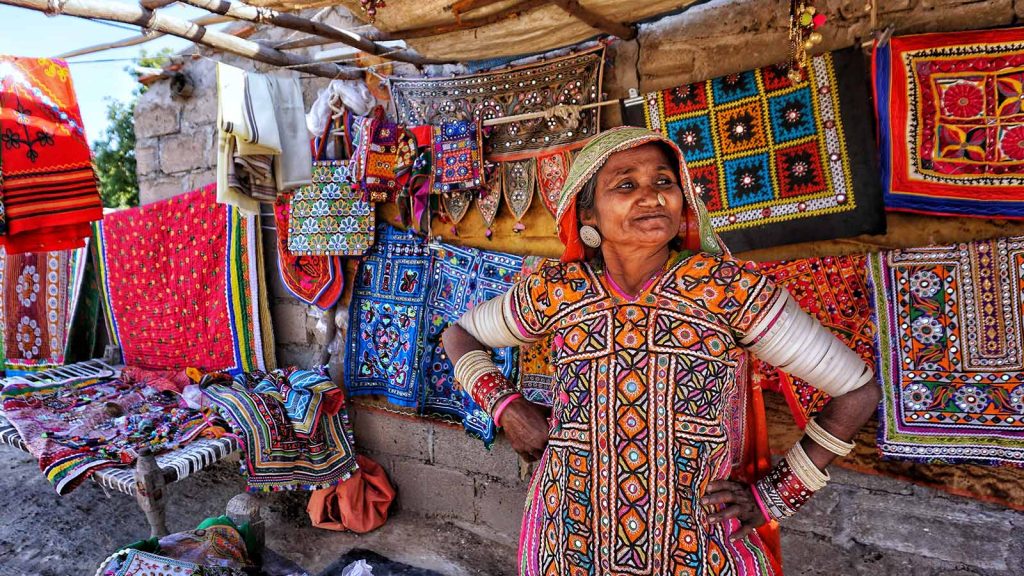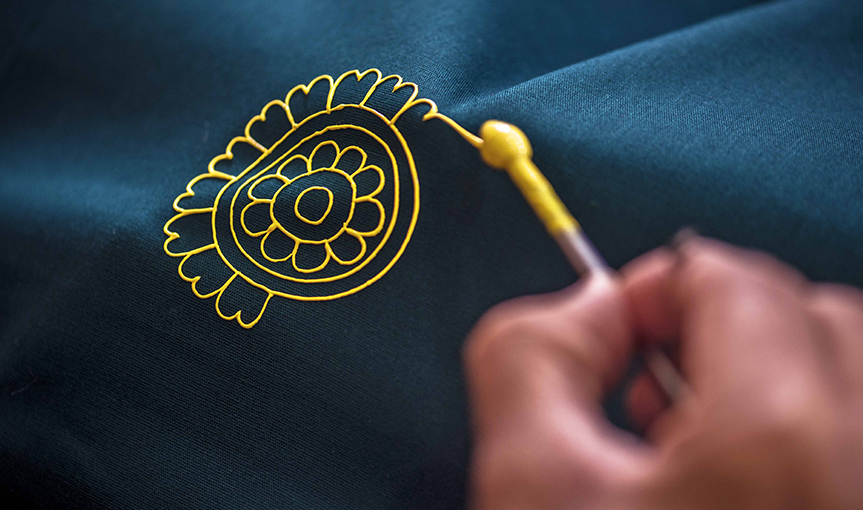Gujarat, a vibrant state in western India, is not just known for its bustling cities, magnificent art galleries, and rich cultural heritage but also its exquisite art and craft. One might find certain similarities between the arts and crafts of Rajasthan, Gujrat, and to some extent Punjab. This is because contemporary culture was brought upon by the Indus Valley civilisation. With a history that dates back centuries, the art and craft of Gujarat showcase creativity, skill, and cultural versatility. From intricate embroidery to vibrant textiles and exquisite pottery, the state of Gujarat offers a treasure trove of artistic traditions that have been passed down through generations.
History of the Art and Craft of Gujarat State
The local art and craft of Gujarat have flourished for centuries, deeply rooted in the state’s rich cultural heritage. Gujarat has been a hub of artistic activity since primordial times, with trade routes (especially the port routes) connecting it to various parts of the world. This exchange of goods and ideas led to the development of unique artistic traditions that continue to thrive today. One of the earliest forms of Gujarati art can be dated back to the Indus Valley Civilization, where archaeologists unearthed artefacts such as pottery and seals adorned with intricate designs. Over the centuries, Gujarat has been influenced by various dynasties and cultures, including the Mauryas, Guptas, Mughals, and British, each leaving their mark on the region’s art and craft.
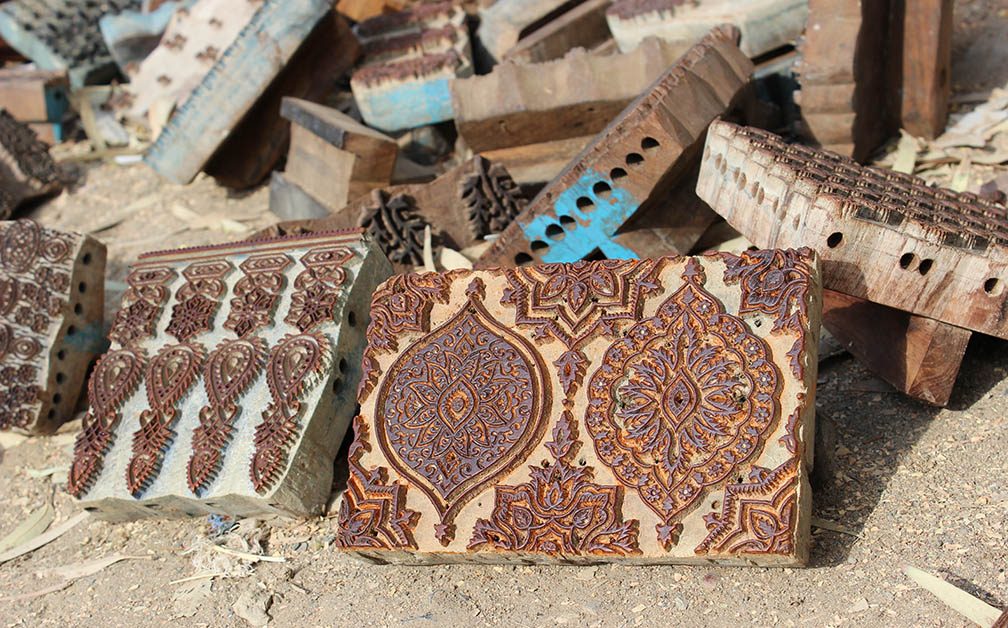
Famous Art and Craft of Gujarat
Gujarat is home to myriad embroidery, pottery, textile, and painting traditions. Let us discuss some of them briefly.
Embroidery Traditions
Embroidery holds a special place in the heart of Gujarat’s artistic heritage. The state is renowned for its exquisite embroidery techniques, with each region boasting its unique style. Some of the most famous forms of embroidery in Gujarat include the following.
Kutch Embroidery: Hailing from the Kutch district, this style of embroidery is characterized by its intricate mirror work, colourful dyed threads, and geometric patterns. Kutchi embroidery often adorns garments, home furnishings, and accessories, showcasing the skill and creativity of local artisans. It is mostly done on cotton using cotton or silk threads. The use of diverse stitching styles including the square chain, double buttonhole, pattern darning, running stitch, satin and straight stitches are staples in Kutch embroidery.
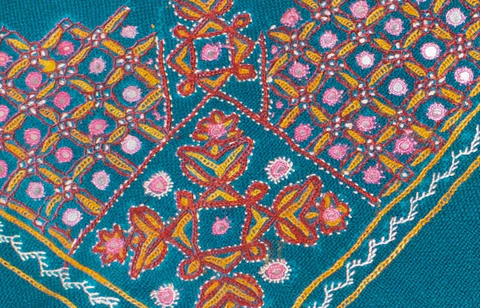
Suf Embroidery: Originating from the Saurashtra and Sindh regions, Suf embroidery is known for its delicate threadwork and intricate motifs which boast geometric and symmetrical patterns. The embroidery is developed around triangles (or suf) and diamonds. Artisans meticulously hand embroider fabrics using techniques such as satin stitch, chain stitch, and mirror work, creating stunning pieces of art.
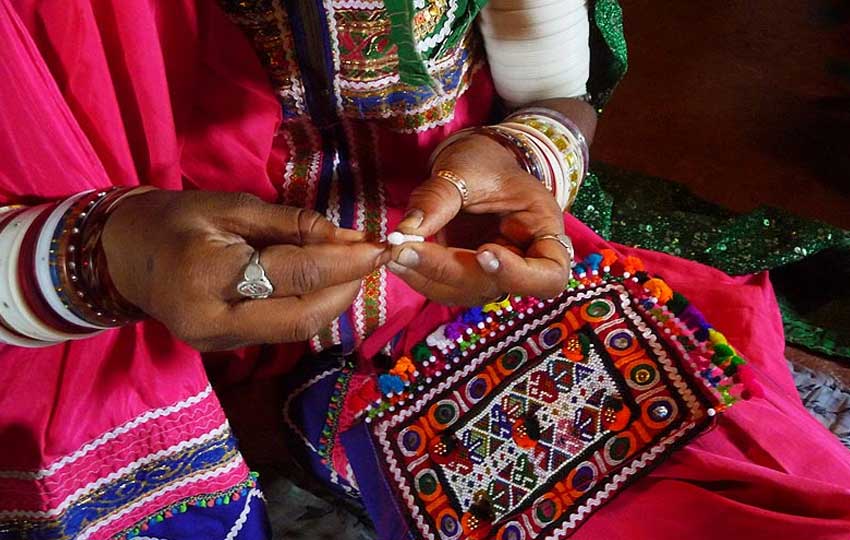
Textile Traditions
Gujarat is also celebrated for its rich textile traditions, with a myriad of weaving techniques, prints, and designs that reflect the state’s cultural diversity. Some of the famous textiles of Gujarat include the following.
Bandhani: Also known as tie-and-dye, Bandhani is a traditional technique where fabric is tied tightly with thread before being dyed. The tied areas resist the dye, creating splendid patterns and designs. Bandhani textiles are often vibrant and colourful, making them popular for sarees, dupattas, and dress materials.
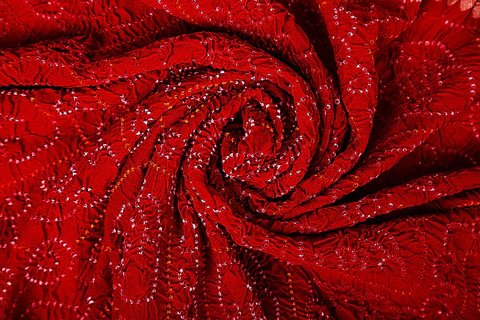
Patola: Patola silk sarees are considered among the finest textiles in India, known for their silk threads which are dyed before weaving to produce immaculate designs and colour schemes. These double ikat sarees are a common phenomenon in the Patan district of Gujarat. handwoven by master weavers using a highly complex technique that involves dyeing the warp and weft threads separately before weaving them together.
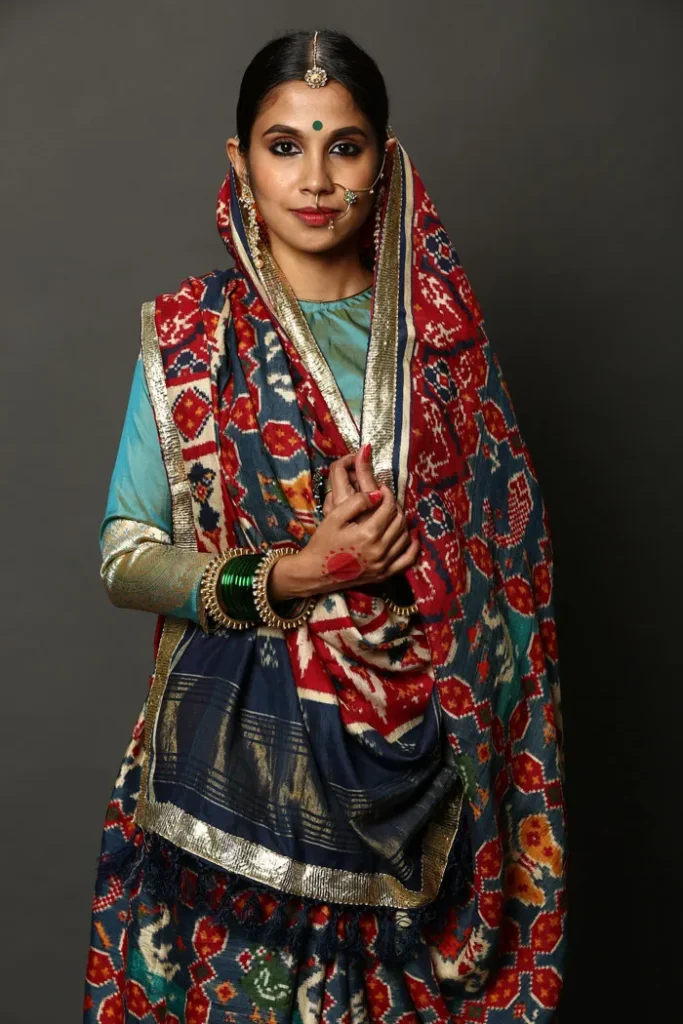
Mata Ni Pachedi: Originating from the nomadic Vaghari community, Mata Ni Pachedi is characterized by its unique white-and-red colour scheme. The term translates to ‘behind the mother goddess’ and is made to honour the Goddess ‘Shakti’ in her various forms. The central figure is always drawn the last using a bamboo stick. Hence, it is seldom known as the Kalamkari of Gujarat.
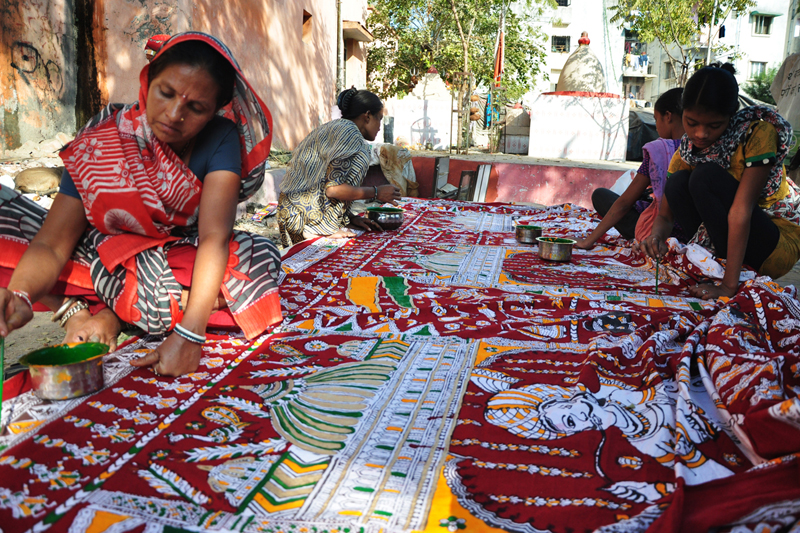
Rogan: Rogan art is an endangered art form which is propagated by the Khatri community of Kutch. It uses oil and natural pigments to create ornate and decorative patterns on the cloth. However, the brush or ‘kalam’ never touches the fabric. The artisan skillfully guides the hand along the textile to create them. The cloth is folded onto itself to mirror the pattern.
Image Courtesy – Zee Zest
Lalbhai Dalpatbhai Museum Ahmedabad Vanguards The Past For a Culturally Rich Future

